
Toussaint Charbonneau was a French Canadian explorer, fur trapper and merchant who is best known for his role in the Lewis and Clark Expedition as the husband of Sacagawea.

Jean Baptiste Charbonneau, sometimes known in childhood as Pompey or Little Pomp, was a Lemhi Shoshone-French Canadian explorer, guide, fur trapper, trader, military scout during the Mexican–American War, alcalde (mayor) of Mission San Luis Rey de Francia and a gold digger and hotel operator in Northern California. His mother was Sacagawea, a Shoshone who worked as a guide and interpreter for the Lewis and Clark Expedition. Charbonneau spoke French and English and learned German and Spanish during his six years in Europe from 1823 to 1829. He spoke Shoshone and other western Native American languages, which he picked up during his years of trapping and guiding.
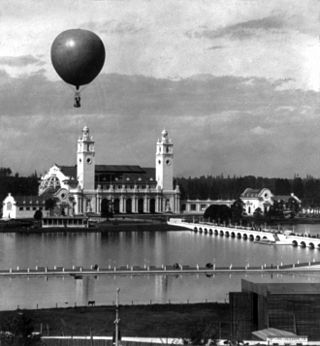
The Lewis and Clark Centennial Exposition, commonly also known as the Lewis and Clark Exposition, and officially known as the Lewis and Clark Centennial and American Pacific Exposition and Oriental Fair, was a worldwide exposition held in Portland, Oregon, United States in 1905 to celebrate the centennial of the Lewis and Clark Expedition. While not officially considered a World's Fair by the Bureau of International Expositions, it is often informally described as such; the exposition attracted both exhibits and visitors from around the world. During the exposition's four-month run, it attracted over 1.6 million visitors, and featured exhibits from 21 countries. Portland grew from 161,000 to 270,000 residents between 1905 and 1910, a spurt that has been attributed to the exposition.
Cameahwait was the brother of Sacagawea, and a Shoshone chief. He was the head of the first group of inhabitants of modern-day Idaho who were encountered by Europeans.

Sacagawea was a Lemhi Shoshone woman who, in her teens, helped the Lewis and Clark Expedition in achieving their chartered mission objectives by exploring the Louisiana Territory. Sacagawea traveled with the expedition thousands of miles from North Dakota to the Pacific Ocean, helping to establish cultural contacts with Native American people and contributing to the expedition's knowledge of natural history in different regions.
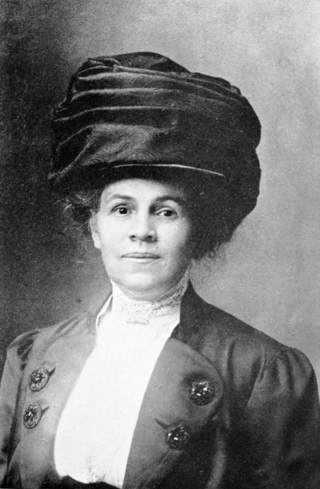
Eva Emery Dye was an American writer, historian, and prominent member of the women's suffrage movement. As the author of several historical novels, fictional yet thoroughly researched, she is credited with "romanticizing the historic West, turning it into a poetic epic of expanding civilization." Her best known work, The Conquest: The True Story of Lewis & Clark (1902), is notable for being the first to present Sacagawea as a historically significant character in her own right.
The Museum of Human Beings is a historical novel by Colin Sargent about the life of Jean Baptiste Charbonneau, the son of Sacagawea.
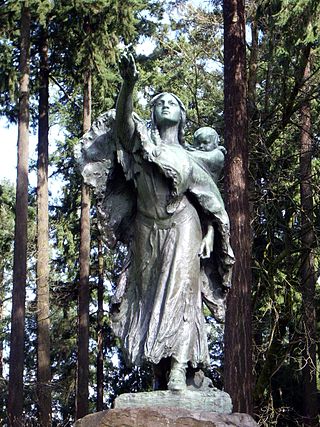
Alice Cooper was an American sculptor.
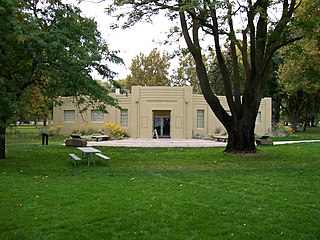
Sacajawea State Park is a public recreation area and historical preserve in the city of Pasco, Washington, covering 267 acres (108 ha) at the confluence of the Snake and Columbia rivers where the Lewis and Clark Expedition camped on October 16, 1805. The state park bears the name of the Shoshone woman Sacagawea, who was an active member of the expedition married to expedition member Toussaint Charbonneau, a French-Canadian interpreter and explorer. The park's Sacajawea Interpretive Center features exhibits about her and about the Lewis and Clark Expedition.

The Lewis and Clark Exposition Gold dollar is a commemorative coin that was struck in 1904 and 1905 as part of the United States government's participation in the Lewis and Clark Centennial Exposition, held in the latter year in Portland, Oregon. Designed by United States Bureau of the Mint Chief Engraver Charles E. Barber, the coin did not sell well and less than a tenth of the authorized mintage of 250,000 was issued.

Meriwether Lewis and William Clark was a historic bronze sculpture of Meriwether Lewis, William Clark, and Sacagawea located at Charlottesville, Virginia. Known as Their First View of the Pacific, it was sculpted by noted artist Charles Keck (1875-1951), and was the first of four commemorative sculptures commissioned from members of the National Sculpture Society by philanthropist Paul Goodloe McIntire. The sculpture was erected in 1919.

Coming of the White Man is a bronze sculpture by American artist Hermon Atkins MacNeil, installed in Washington Park, Portland, Oregon in the United States. The statue was gifted to the City of Portland in 1904 by former mayor David P. Thompson and installed the following year. It depicts two Native American men, including Chief Multnomah, looking towards the Columbia River upon the arrival of Lewis and Clark.

The Lewis and Clark Memorial Column is an outdoor monument by artist Otto Schumann, dedicated to Meriwether Lewis and William Clark for their expedition and located at Washington Park in Portland, Oregon.

Lewis and Clark, also known as the Lewis and Clark Expedition of 1804–1806 Memorial, is an outdoor 1934 white marble sculpture by Leo Friedlander installed outside the Oregon State Capitol in Salem, Oregon, United States.
Otter Woman was a Shoshone woman who was the wife of Smoked Lodge. Otter Woman was likely kidnapped by the Hidatsa and purchased by Toussaint Charbonneau, who is best known as the husband of Sacagawea. At the time of Sacagawea's abduction and sale to Charbonneau, Otter Woman was already living with Charbonneau as his wife. Charbonneau and Sacagawea were to gain fame as part of the Lewis and Clark Expedition, supported by the Corps of Discovery.
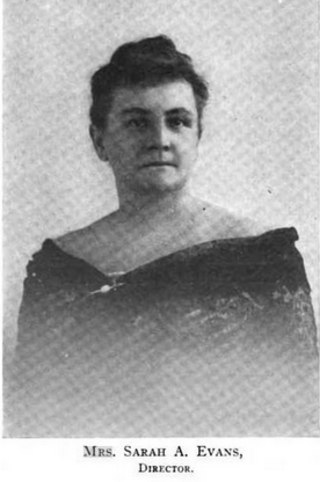
Sarah Ann Shannon Evans was an American clubwoman and suffragist based in Portland, Oregon, president of the Oregon Federation of Women's Clubs from 1905 to 1915. She was the first woman in Portland to carry a police badge, in her work as the city's first Market Inspector. She also worked for state funding of free public libraries in Oregon.

Sakakawea is a monumental sized bronze sculpture created by Leonard Crunelle. It was dedicated on October 13, 1914 and stands on the grounds of the North Dakota State Capitol in Bismarck, North Dakota. A recasting was done in 2003 to place in the United States Capitol.

Bruno Louis Zimm was an American sculptor. He created a variety of works: fountains, memorials, freestanding sculptures, and architectural sculptures.
















